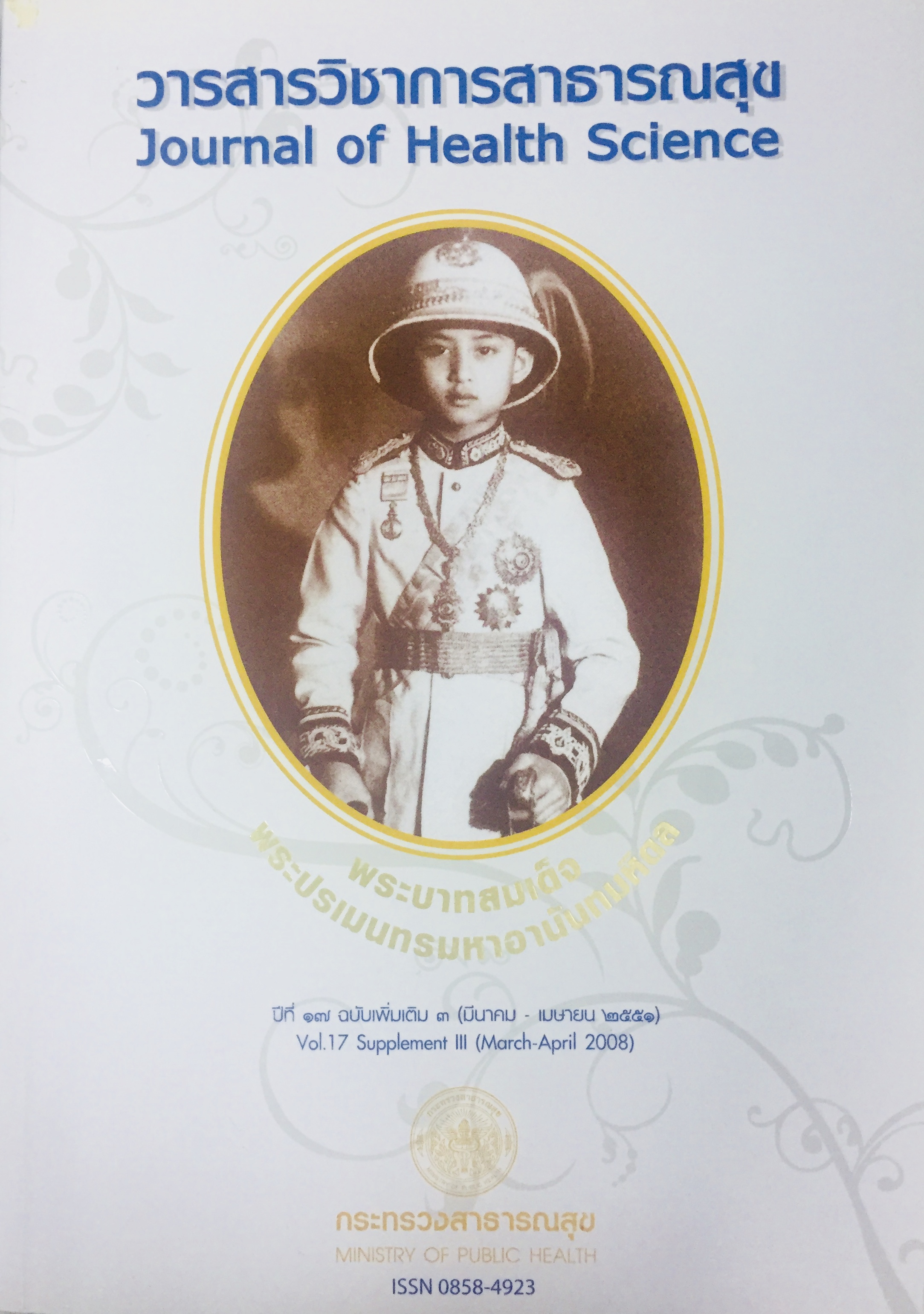The Comparison of Closed Reduction with Percutaneous Pinning Procedure and Open Reduction with Internal Fixation in the Surgical Treatment of Displaced Supracondylar Fractures of Humerus in Children
Keywords:
supracondylar fracture, children, humerus treatment, CRPP/ORIFAbstract
Supracondylar fractures of the humerus in children are among the most frequently seen in the pediatric orthopaedic clinic setting worldwide. The commonly accepted treatment of displaced supracondylar fractures of humerus in children is closed reduction with percutaneous pinning(CRPP); however, open reduction with internal fixation (ORIF) is also advocated by a number of authors. This retrospective study was conducted to compare the outcomes of closed reduction with percutaneous pinning and open reduction with internal fixation of 142 children with displaced supracondylar fractures admitted in the Pathum Thani hospital between October 2002 and September 2007. Of which 78 patients were treated with ORIF and 64 patients with CRPP. The functional and cosmetic outcomes were evaluated according to modified Flynnีs criteria after reduction.
There were reportedly 97.4 percent satisfactory results in ORIF and 95.3 percent in CRPP group with limited unsatisfactory results of only 2.6 percent and 4.7 percent respectively. Analysis of the carrying angle loss, elbow extension loss and elbow flexion loss indicated that the differences were not statistically significant( p > 0.05)
CRPP yields similar outcome to ORIF for the treatment of pediatric displaced supracondylar humeral fracture.The author recommends CRPP before ORIF because of its minimal invasiveness relative to ORIF.
Downloads
Downloads
Published
How to Cite
Issue
Section
License
Copyright (c) 2018 Journal of Health Science

This work is licensed under a Creative Commons Attribution-NonCommercial-NoDerivatives 4.0 International License.







